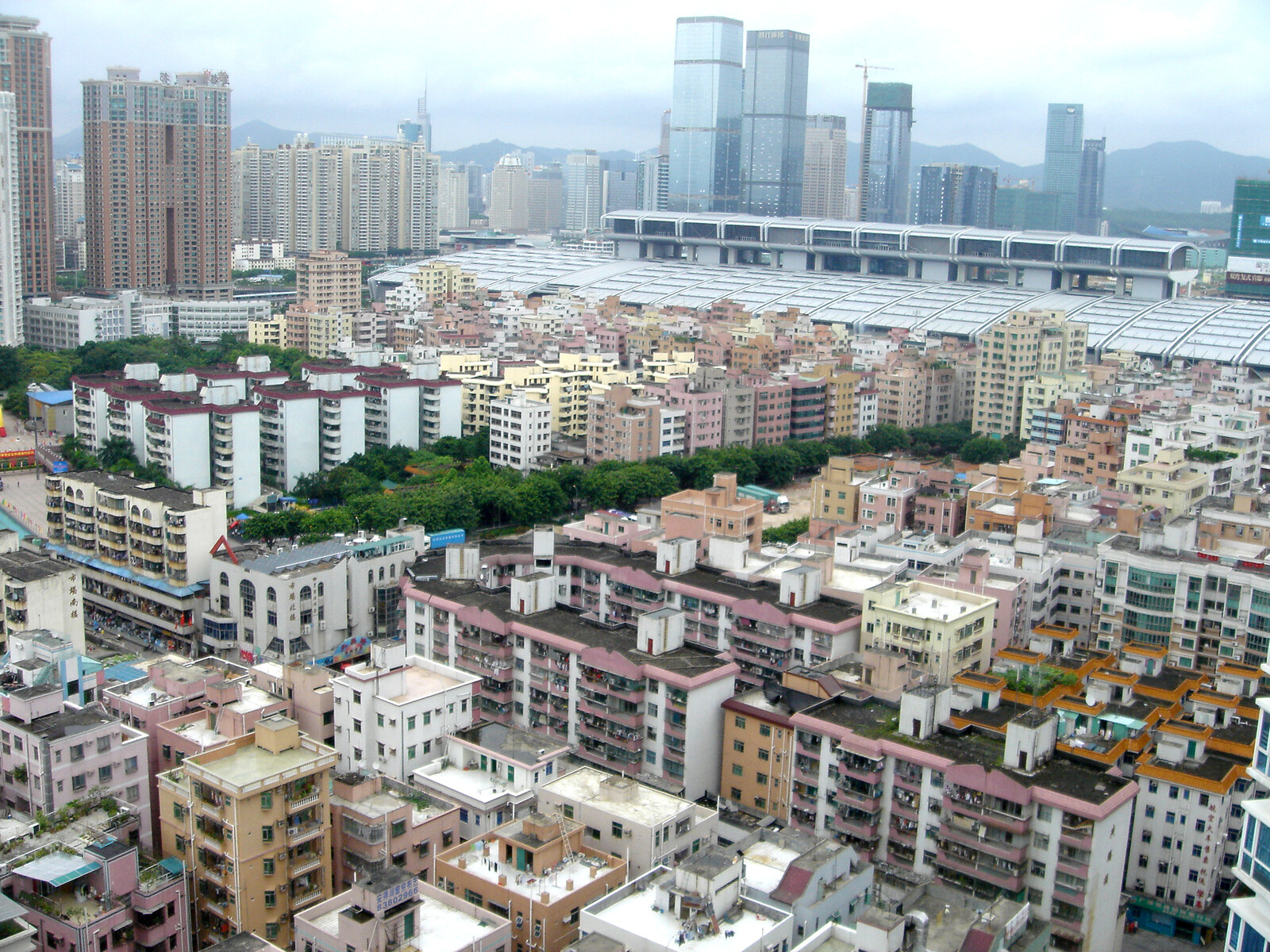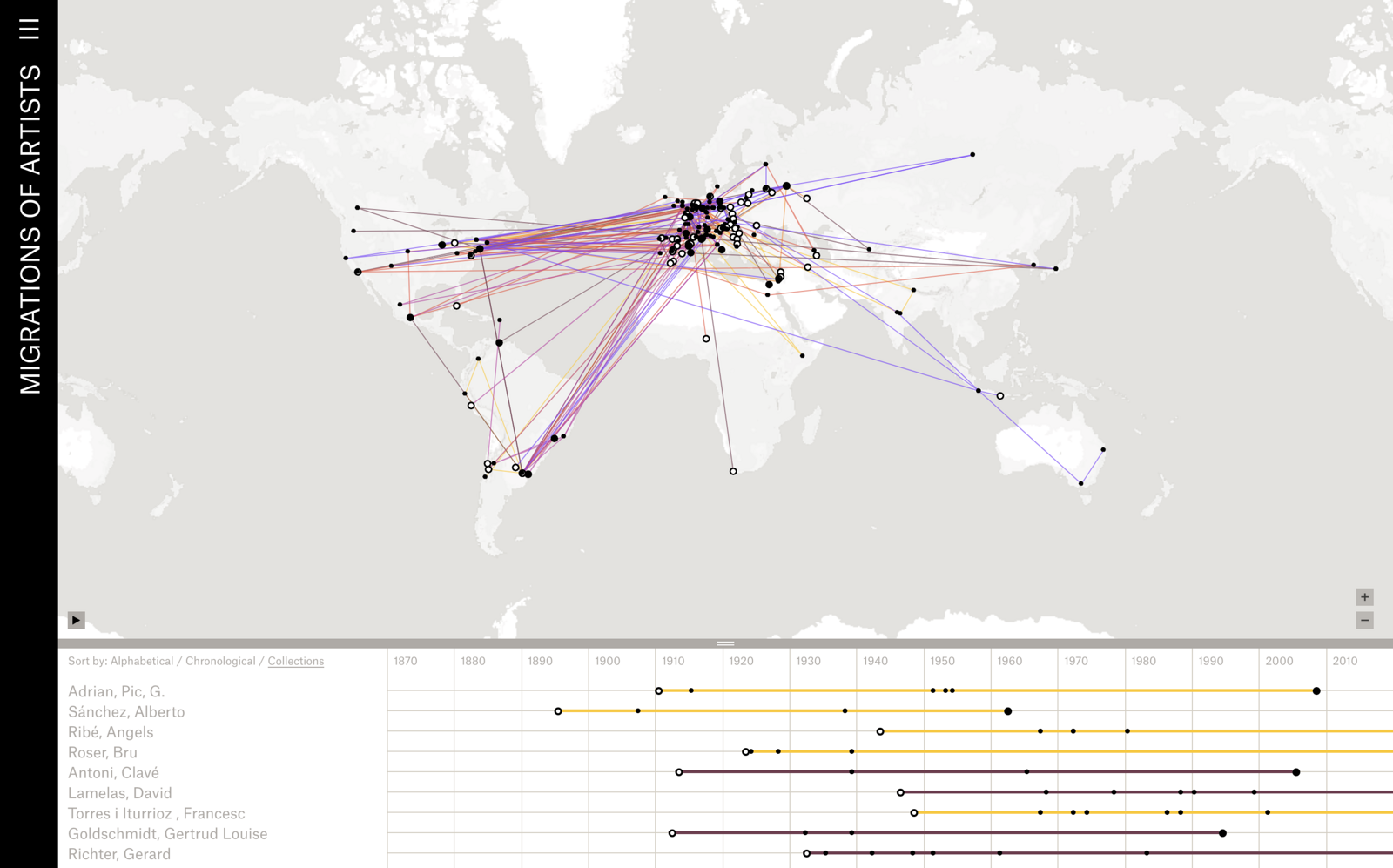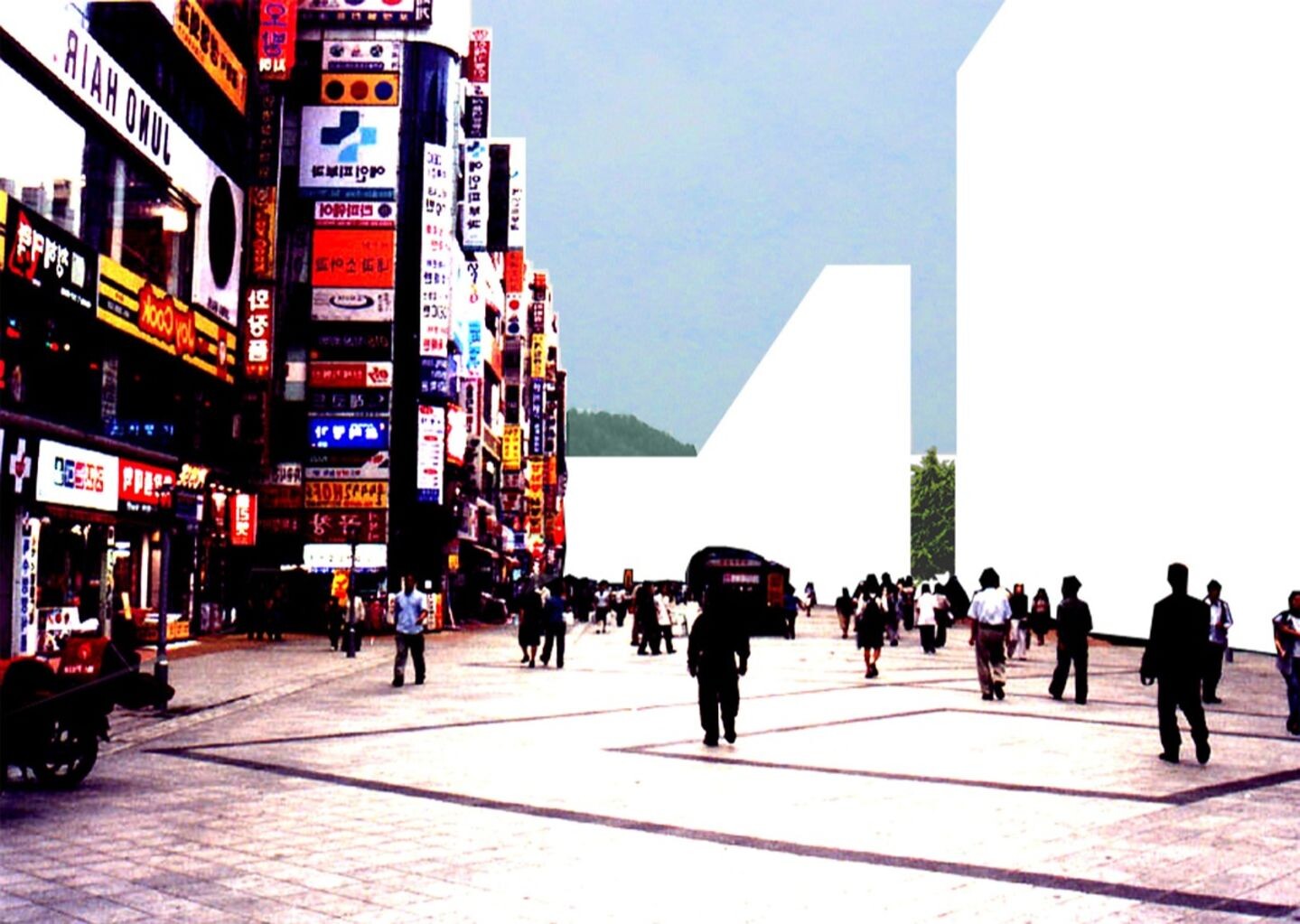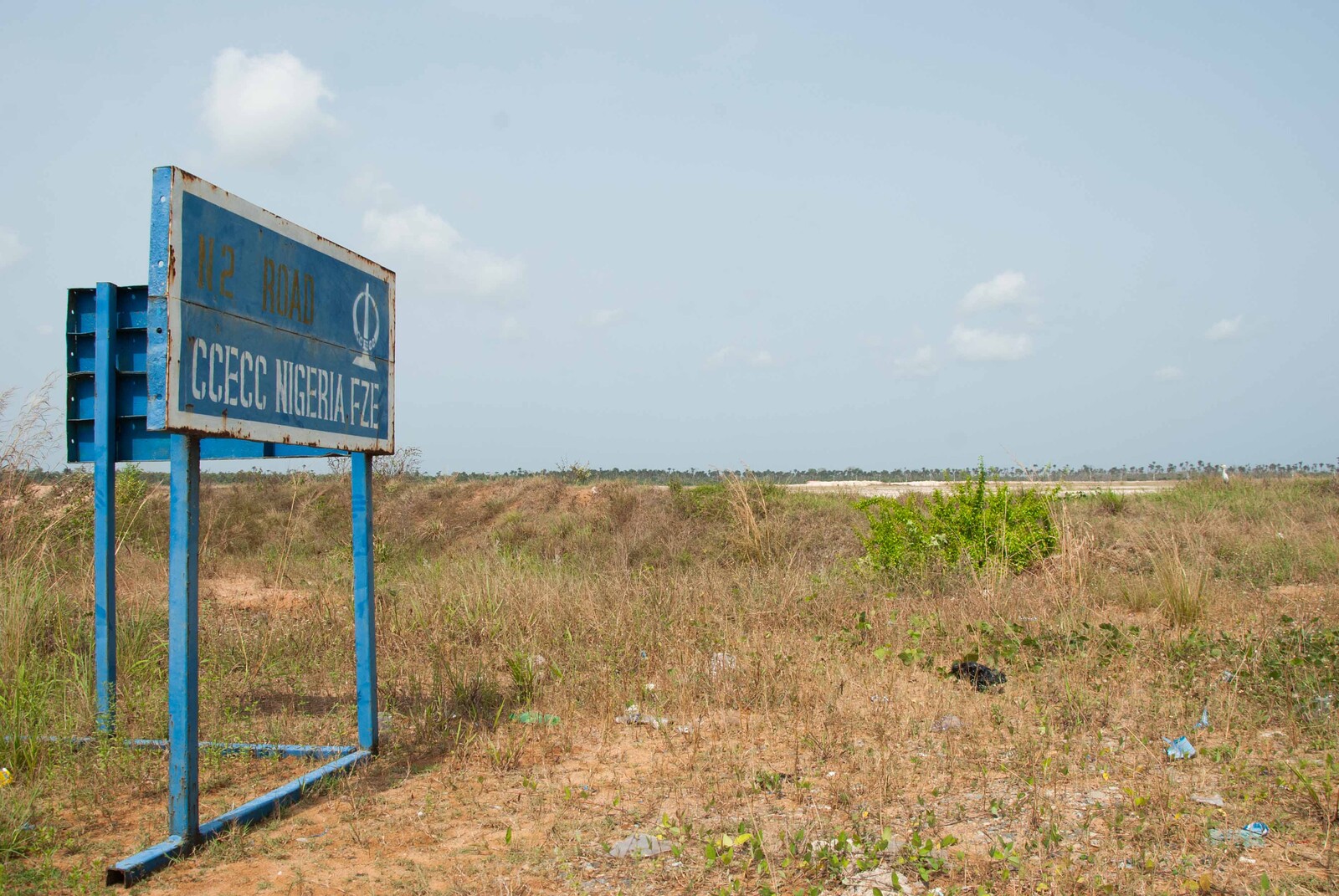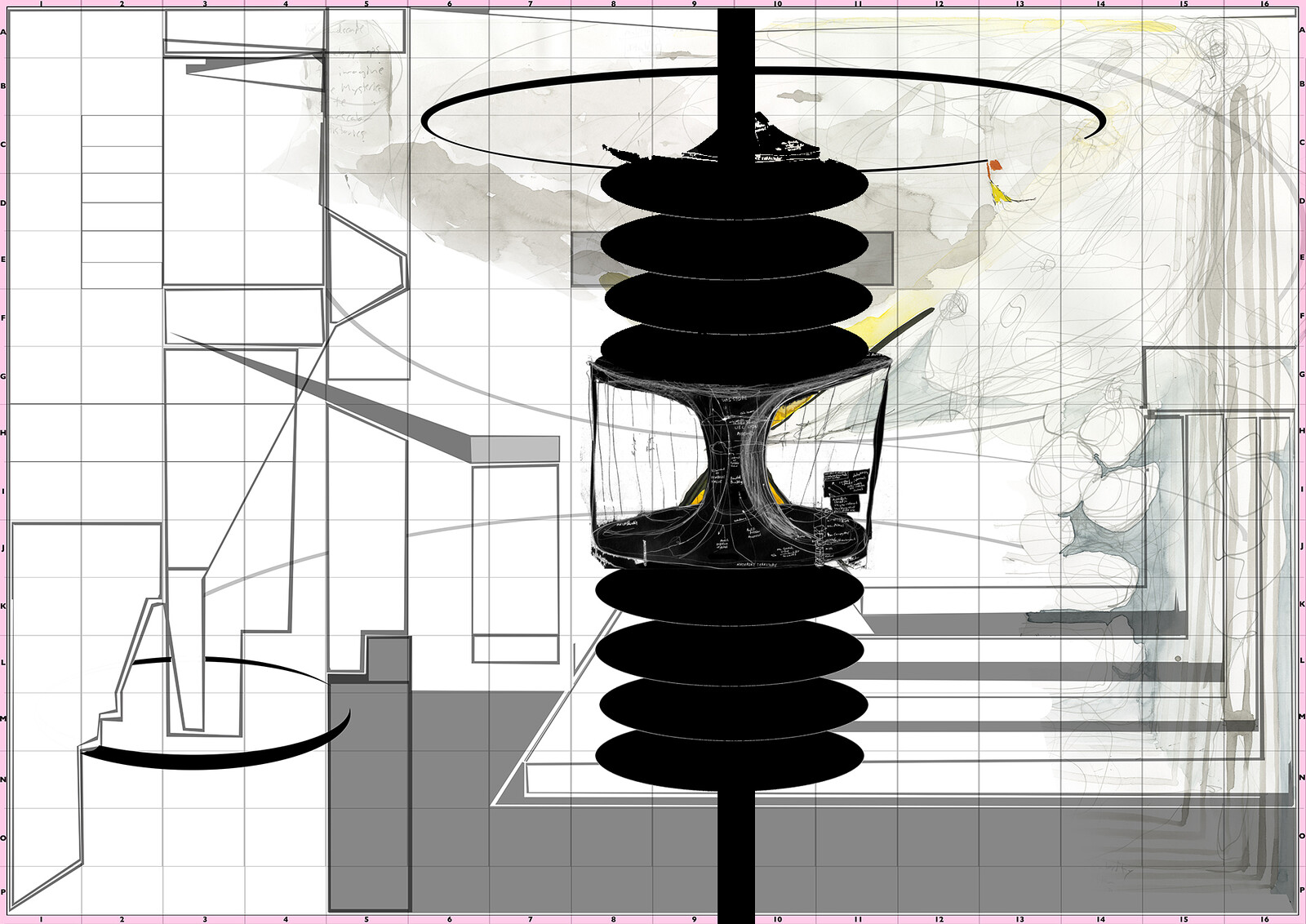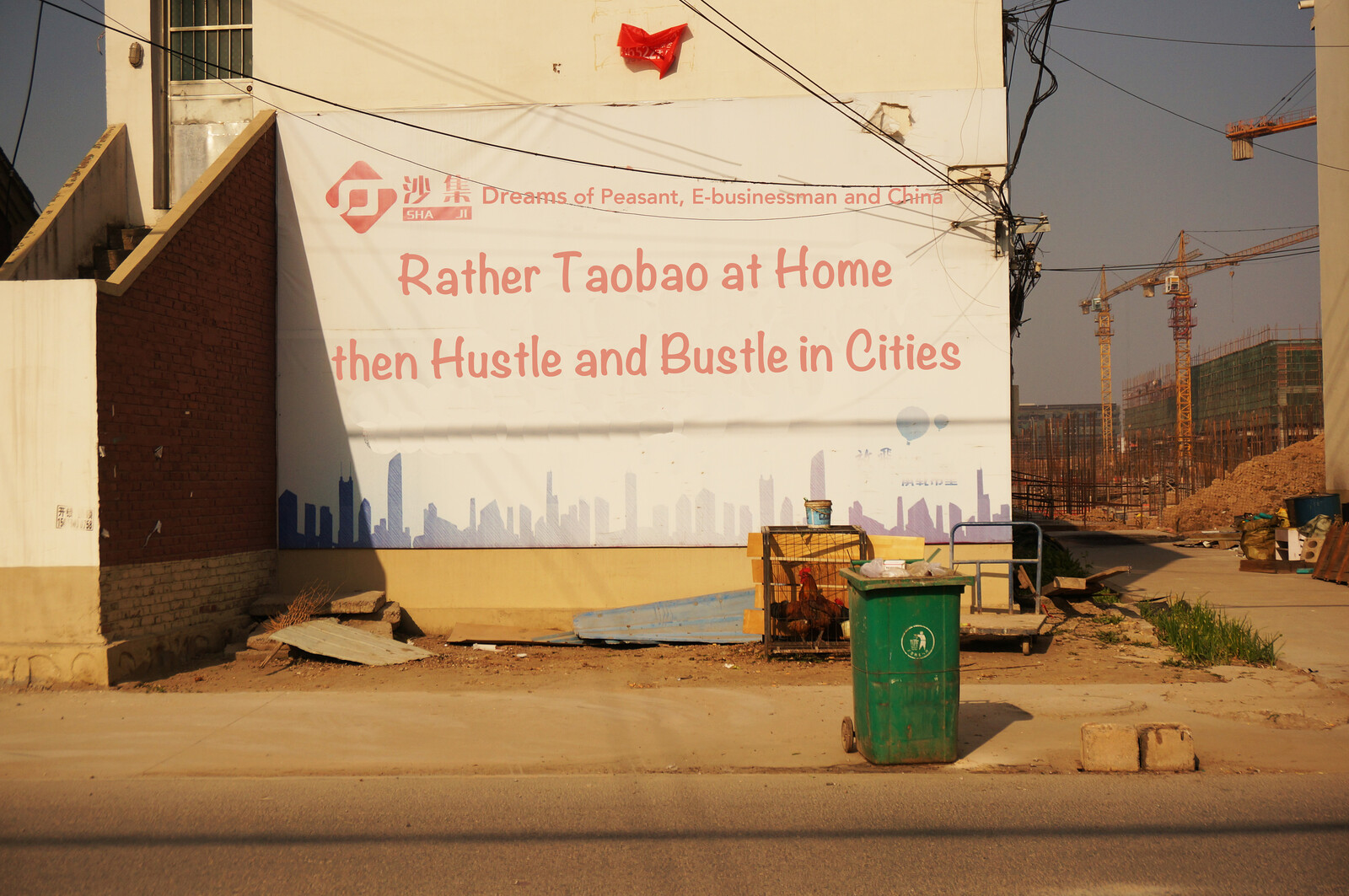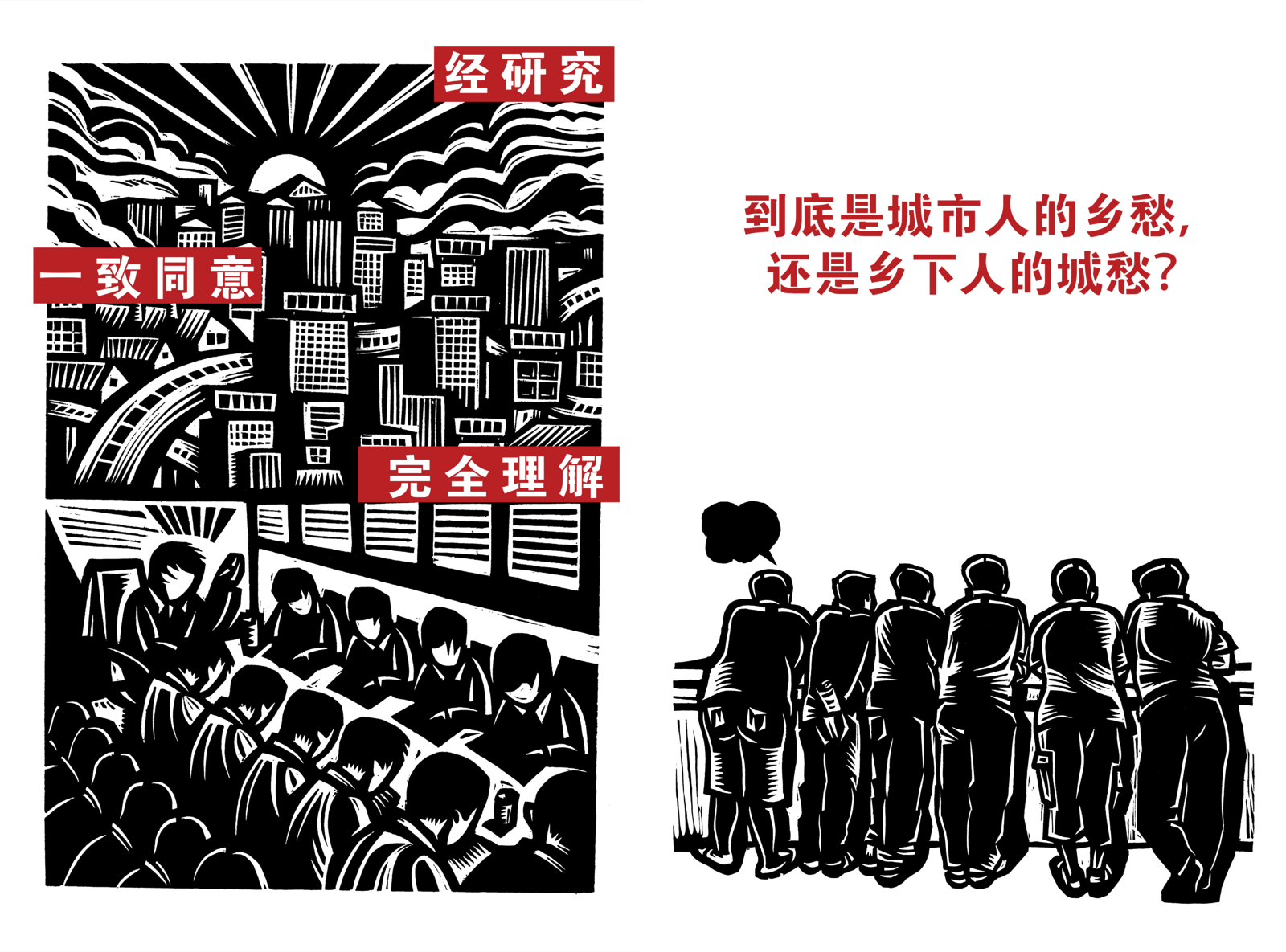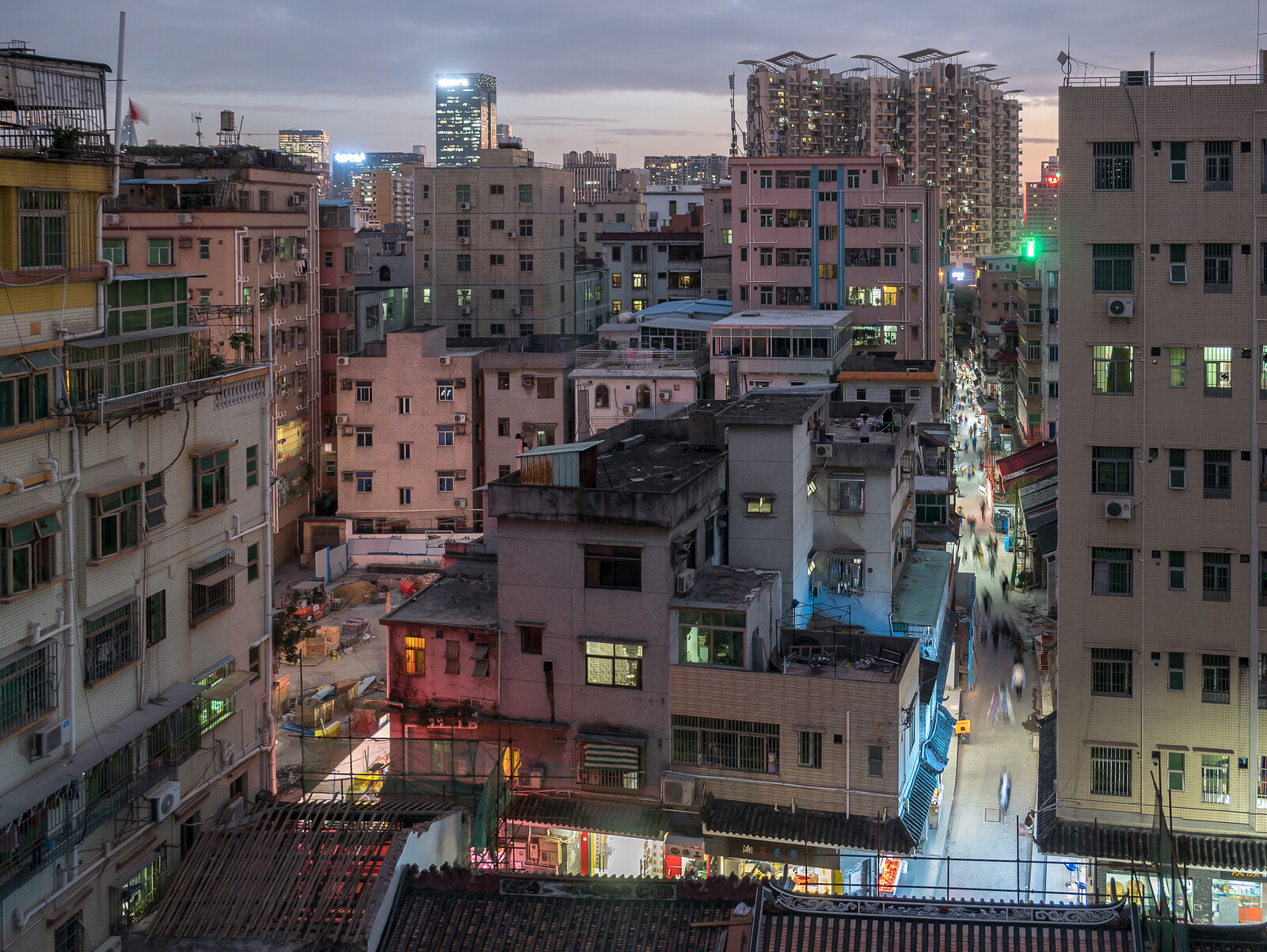Baishizhou, one of Shenzhen’s last remaining centrally located urban villages and home to approximately 140,000 people living in an area of just six square kilometers, is slated for demolition. Bulldozers have already erased one section of industrial buildings. Although earmarked for redevelopment since 2012, it bore few signs of this future just three years ago. Like other urban villages, Baishizhou is distinct from the surrounding city in its densely packed physical form and the vibrant intensity of its street life. A diversity of programs, activities, stakeholders, and forms of entrepreneurship exist in Baishizhou that cannot exist within the formalized and regulatory structure of the surrounding city. Baishizhou has offered much needed affordable housing in a central district for Shenzhen’s working poor and students. In this way, Baishizhou, like other urban villages or “Villages in the City” (“cheng zhong cun”) in China, emerged from the dynamic synergy and exchange with the adjacent planned city as a unique urban space.
Many urban villages are being eradicated in favor of more sanitized and homogenous urban forms. Echoing many of the historical post-war slum clearance programs in the UK and US, many Chinese city governments use the rhetoric of progress to argue that urban villages are unhygienic, unsafe, and are in desperate need of modernization. Yet urban villages are not only embedded in the physical morphology of the city; they are interwoven within the urban metabolism of the city itself. If they were removed where would the working poor live? How would the city be able to accommodate variations in the influx of migrant workers? And how could rural migrants become assimilated into the operations of the city?
Residual Histories
Baishizhou is technically a conjugation of five villages. Three (Baishizhou, Shangbaishi, and Xianbaishi) are “natural,” originally rural villages, and two (Xintang and Tangtou) are “administrative” villages.1 Four are located on the northern side of Shennan Road, Shenzhen’s major East-West thoroughfare. The boundaries between the villages are blurred, usually only indicated by a road or different address plaques. Demolition of the northern section of Baishizhou began in 2016, and more demolitions are scheduled for 2018. The fifth village, Baishizhou, located on the southern side of Shennan Road, is not slated for demolition. The northern section, however, is identified with “Baishizhou” in Shenzhen’s vernacular geography.
Spatial differences among the four villages in the northern section of Baishizhou occur, but are subtle. Tangtou is an exception, as it contains a residual fragment of its rural past in the form of five rows of one-storey workers’ dormitories that accommodate eighty-six households. The buildings were constructed in 1959 when the government decided that the original Tangtou village in Shiyan, located about fifteen kilometers north-west of Baishizhou, was to be flooded to form a new reservoir as part of the East River Waterworks project.2 Residents were relocated to a newly set up agricultural work unit, the Shahe State Farm, and through this process the original Tangtou residents, who were rural villagers, became part of the state apparatus. This initial move was the origin for the latent ambiguity in status that underlaid all further evolution of the village: whether these displaced villagers had development rights to their new land.
Before 1979 the collection of rural villages in Southern Guangdong adjacent to British-ruled Hong Kong was called Bao’an County. During periods of extreme volatility and hardship in the Mao era such as the Great Leap Forward and Cultural Revolution, many villagers within Bao’an County abandoned their homes and attempted to flee across the border to Hong Kong.3 To maintain agricultural production within Bao’an, the government installed work units, such as the Shahe State Farm, and used them to house and provide jobs for repatriated Chinese citizens from nearby countries undergoing political turmoil such as Suharto’s Indonesia, which in 1965–66 suppressed communism and violently persecuted its migrant Chinese population.
Up until Deng Xiaoping’s radical economic reforms of 1979, Bao’an remained an agricultural county composed of natural villages and state farms producing lychees, bananas, rice, and oysters. Due to its adjacent border with Hong Kong, Deng selected Bao’an as a laboratory for economic growth, and re-categorized it to the status of Shenzhen Municipality. Its designation as a Special Economic Zone with opportune regulatory conditions of cheap land and labor encouraged the influx of foreign investment and stimulated industrial production. While the Shenzhen Municipality initially incorporated the entire Bao’an County of 1,953 square kilometers, by 1981 it became apparent that it was simply too large to manage, and was split into the Shenzhen Special Economic Zone (327 square kilometers) and New Bao’an County (1,626 square kilometers).4
A number of reforms that followed the establishment of Shenzhen dramatically impacted its development. Despite its administrative re-designation, land in Shenzhen ownership was split between urban, state-owned land, and rural, collectively owned land. In 1982, the Chinese constitution clarified that rural land was owned by village collectives and urban land was owned by the state. Furthermore, it stated that collective land could be expropriated by the state, whereby villagers would receive cash compensation to replace their income and their home. By 1983, the constitution allowed those citizens with rural hukou, the registration system set up by Mao to distinguish between rural citizens and urban citizens, to migrate to cities and work as long as they maintained their original registration status and kept up the quota of agricultural production that came with it. And in 1984, the constitution allowed rural villagers to diversify the activities on their land, permitting them to build houses, undertake industrial activities, or pursue commercial ventures so long as it was approved by the village collective.5
As a result of the state implementing its first masterplan in 1982, many migrants came to Shenzhen to work in assembly factories or to work on construction sites. The earliest houses of this era, built in the early eighties, were one- to two-storey villas built for villagers’ own private use. However, as housing was not available in Shenzhen itself, the new influx of migrants created opportunities for villagers to develop rental properties and open commercial businesses such as shops and restaurants. This led to the creation of six- to ten-storey, densely packed urban blocks known as “handshake buildings” (握手楼, woshou lou, “kissing building”), named for the ability to shake the hand of your neighbor across the road simply by reaching out of the window.
Handshakes were mainly built between 1992 and 2004. The large scale of these buildings compared to the previous rural activities made financing the construction a collaborative investment, with villagers tending to pursue joint ventures with other villagers or family members in Hong Kong, Taiwan or other parts of China. These buildings, which have become the dominant type that characterizes urban villages throughout Shenzhen, are illegal in that they violate many building codes that the municipality has implemented to regulate urban construction.6 In 1986, authorities attempted to set a maximum building height of three stories and maximum area of forty square meters per household. However, as the real estate profit margin remained consistently seductive throughout the 1990s, the threat of fines was an ineffective deterrent to building taller and larger.
Handshakes create a dense urban mass separated by thin crevices of light. These crevices contain services for the buildings: drain pipes; electric wires; air-conditioning units, and drying racks for wet clothes. In some cases, the gaps are so narrow that they become dumping sites for rubbish and waste. Those that are wide enough to walk down as alleyways create a secondary network of pedestrian flow from the single lane roads that carve through the urban blocks. Walking through one of the alleys in Tangtou, one emerges into an urban clearing that reveals the one-storey grid of collective dormitories. Its relative openness, and the visibility of the sky, contrasts with the claustrophobia of the handshakes. Some of the buildings are in disrepair, with broken windows and missing roof tiles, while others have been given new extensions, awnings, and recently applied cement render. Adjacent to the blocks is a rectangular public space which, depending on the time of day, either serves as a basketball court, night market, or an expansion of the various restaurants that surround its edge. A well opposite this space provides water for washing, cleaning and cooking. Without the perimeter wall of handshake buildings, the cluster not only operates, but also looks like many other rural villages. It is not so hard to imagine that these buildings were once surrounded by farmland.
The presence of different building typologies—farm dormitories, the three-storey houses, and handshakes—each of which are from different eras and policy directives, provide evidence of the different stages of the village’s transformation from rural to urban. In this regard, Baishizhou as a whole and Tangtou in particular can be understood as palimpsests; while handshakes reflect the evolution of villagers from farmers to real estate developers, the older fragments reflect a lingering ambiguity about the legal status of Tangtou’s original villagers. In the government’s view, the Tangtou villagers had foregone their rural citizen rights by working on the state farm and had become, in effect, urban citizens. Yet for the villagers, they were still fundamentally operating as rural citizens; they were still farming the land, they still retained their rural hukou, and although they didn’t have official rural rights to the surrounding land (as did their natural-village counterparts), they nevertheless claimed and built on this land during the frenzied industrialization of the late eighties and early nineties.7 Yet the dormitory blocks from 1959 were officially part of the Shahe collective farm, and thus are administratively considered to be on state-controlled land. This anomaly in development provides Tangtou with its uniqueness; a residual historic fragment in a city which retains little and is in a constant state of change.
Stagnation
Despite efforts to clamp down on illegal building and control the development of the urban villages, construction continued in Shenzhen’s urban villages relatively unabated throughout the nineties. In 2006, to prove its seriousness, the government demolished seventeen, fifteen- to twenty-storey handshake buildings in Yunongcun, an urban village in Shenzhen’s Futian District.8 Yet more inconspicuous forms of policy have led urban villages to reach a point of relative stasis in their evolutionary development.
The “villages-to-residents” policy, which was first introduced within the SEZ boundary in 1992 and expanded to the entire metropolitan area in 2004, changed the hukou citizen status of all villagers from rural to urban, and transformed all village collectives into share-holder co-operatives, from which point forward villagers would own their buildings, but not the land they were built on. Given that the majority of these buildings breached regulations and were in fact deemed illegal, should a resident decide to knock the building down and attempt to build anew, the government could control its development much more stringently. This deterrent has been effective, for as a way to preserve the investments villagers have made in their buildings, things are left as they are, with villagers preferring to wait for a possible compensation package.9 The amount of compensation offered is negotiated by developers, not the government, who negotiate with the resident committee, who in turn negotiate with individual villagers. Consequently, taking ownership of land in urban villages for re-development is complex. Each building consists of multiple stakeholders with multiple investments. One single family, for instance, might manage several flats within different buildings, have a commercial unit in another, and be leasing land-rights somewhere else. And in the case of Baishizhou, any large-scale development plan would also have to be undertaken with the agreement of the five different village committees.
The “villages-to-resident” policy has had two main effects on urban villages. Firstly, it has led to stagnation in their development process and the gradual demise of the existing buildings within the village. Incremental development is not possible, so buildings can only be augmented or repaired. This stymies entrepreneurial development from alternative sets of stakeholders either via individuals, collectives or family networks. It closes down options for financial opportunism and leaves the negotiation for compensation package as the last step in the transformation process from rural to urban land. Additionally, through insisting that the village be developed in its entirety with the burden for compensation being placed on the developer, the scale of the investment becomes very high. In order to recoup such significant expenditure, most developers resort to large scale, high-rise podium tower blocks designed for an upwardly mobile, new middle class. In effect, this means that the only mode of evolution of the village, or any urban village, is through large-scale redevelopment as determined by government master-plans and facilitated by premier development companies.
This is the case in Baishizhou. In 2012, the Lvgem Group, a Shenzhen based development company, proposed to make a new urban entity that aligns itself with a future vision of a modernized, rich and leisured Shenzhen, finally emancipated from its industrial and informal precursor. The vision consists of razing the northern section of Baishizhou in its entirety and replacing it with over five and a half million square meters of real estate.10 Critically, the people who have made the most money in the loop-hole of development, the original villagers, are not the inhabitants of the dormitory blocks or the handshakes. Of the 140,000 people who live in Baishizhou, it is estimated that only 2,000 of them are original villagers. The remaining majority who live in Baishizhou are the disenfranchised, working poor for whom no compensation is to be offered.11
Assimilator
For many rural migrants, urban villages like Baishizhou are the first places they go to when they come to the city. They are the transition point between the rural and the urban. They allow for migrants to become assimilated into the city through networks of family and friends that provide contacts for jobs and places to live. Migrants from the same province will often end up congregating together in the villages and inadvertently preserve their local traditions, like speaking the dialect or opening restaurants serving their local cuisine. This reciprocity between the urban and rural pervades the critical role these villages play in China’s emergent urban development.
Developing urban regions undergoing rapid economic growth have always necessitated an influx of migrants from rural areas to the cities. With this comes the inherent problem of how to house this new population. For governments, such a burden on resources for an intangible, fluctuating population is impracticable. Urban villages present an alternative model to haphazard squatter settlements or slum-like conditions that tend to pop up in response, one that mutually benefits the original villagers, the migrants, and the city government. If allowed to redevelop their plots of land in response to the emergent demands of urban migration, original villagers would profit financially, migrants would have a staging post and relatively cheap rental accommodation, and the government would benefit by not having to pay a single yuan for vast amounts of affordable housing to be built. Furthermore, the urban village has demonstrated itself as a model that can accommodate fluctuations in the economy and changes in migratory patterns.
Villages have been a critical mechanism in China’s urbanization process. They have provided a space of mediation, assimilation, and adaption between the rural and the urban. However, their evolution has been halted, and their very existence threatened by policy changes. Crucial to the future of urban villages is the maintenance of a property regime of land ownership that can allow multiple stakeholders to engage in a process of urbanization and intrinsically create variation, even within a dominant typology such as the handshakes. Urban villages do not merely present an alternative urban model to the current mode of increasingly gated and polarized compounds, but serve as urban incubators and potentially advantageous test sites for experimental planning policies such as new environmental regulations or incentives for people to build with improved access to light and air. If the government regards SEZs as urban laboratories, why not villages?
Tangtou was set up by the state during Mao’s Great Leap Forward (1958–62).
The East River Waterworks project continues to provide Hong Kong’s potable water.
Frank Dikötter. Mao’s Great Famine: The History of China’s Most Devastating Catastrophe, 1958-62. (London, New York, Berlin and Sydney: Bloomsbury Publishing, 2010).
Mary Ann O’Donnell, “Becoming Hong Kong, Razing Baoan, Preserving Xin’an: An Ethnographic Account of Urbanization in the Shenzhen Special Economic Zone,” Cultural Studies 3–4, 15 (2001): 419–443.
George C. S. Lin and Samuel P. S. Ho, “The State, Land System, and Land Development Processes in Contemporary China,” Annals of the Association of American Geographers 95, 2 (June, 2005): 411–436.
Building codes have evolved with Shenzhen’s urban boom, so the cheng zhong cun are not the only neighborhoods where building stock can be retrospectively considered substandard.
Mary Ann O’Donnell, “Path Breaking: Constructing Gendered Nationalism in the Shenzhen Special Economic Zone.” Positions 7, 2 (1999): 343–375.
Jonathan Bach, “‘They come in Peasants and Leave Citizens’: Urban Villages and the Making of Shenzhen, China.” Cultural Anthropology 25, 3 (2010): 421-458.
This compensation package has to provide for the income generated through the land-use-rights and for the building based on an area rate.
Mary Ann O’Donnell, “Laying Siege to the Villages: Lessons from Shenzhen,” Open Democracy (March 28, 2013), ➝.
Helen F. Siu, “Socialist Peddlers and Princes in a Chinese Market Town,” American Ethnologist 16, 2 (1989): 195–212.
Urban Village is collaboration between e-flux Architecture and the 7th Bi-City Biennale of Urbanism\Architecture (UABB) within the context of its theme, “Cities, Grow in Difference.”
Category
Subject
An earlier version of this essay was first published as “Urban Village: Enclave Urbanism” by Joshua Bolchover and Mary Ann O’Donnell in Joshua Bolchover and John Lin, Rural Urban Framework: Transforming the Chinese Countryside (Birkhauser, 2014). The research into Tantou and Bashizhou was initiated as a joint project with Mary Ann O’Donnell in November 2012.
Urban Village is collaboration between e-flux Architecture and the 7th Bi-City Biennale of Urbanism\Architecture (UABB) within the context of its theme, “Cities, Grow in Difference.”







